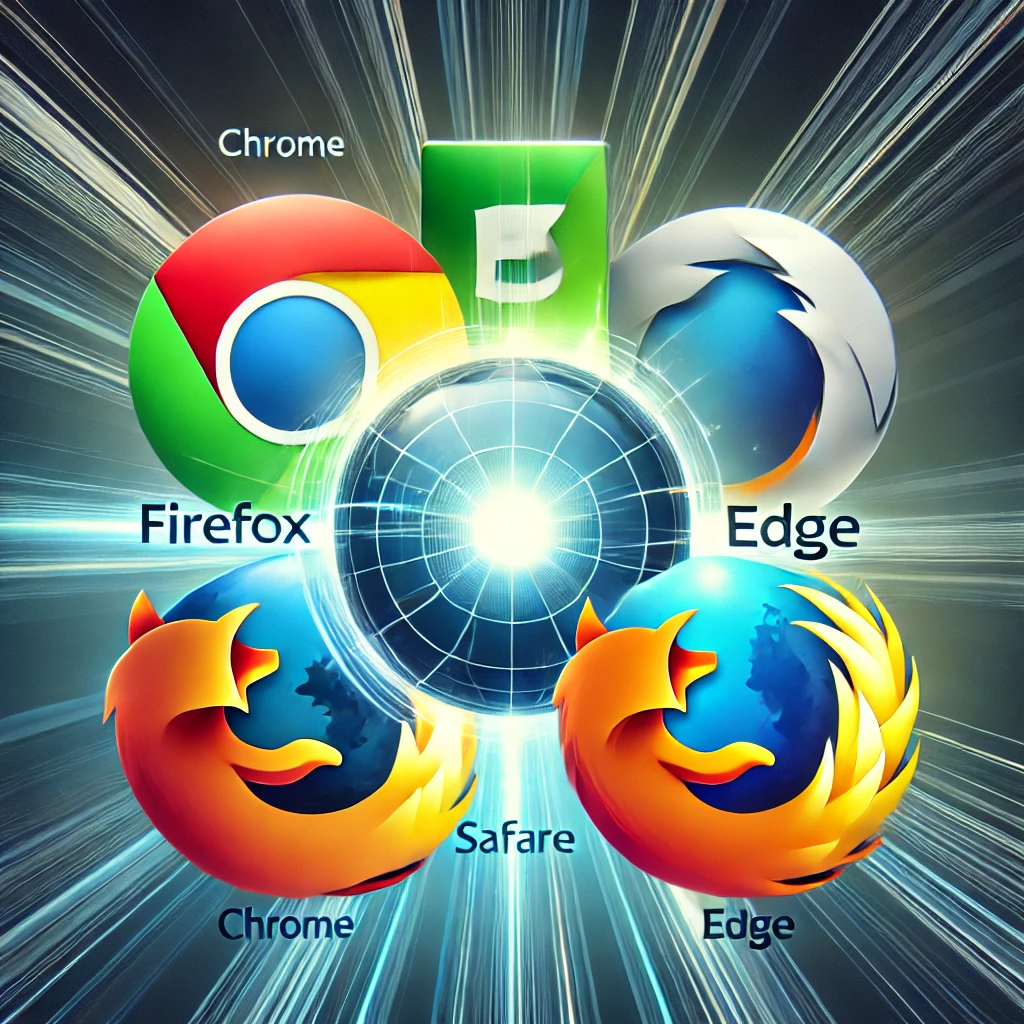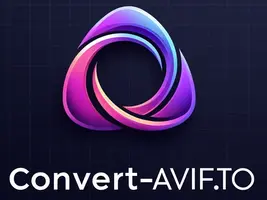Why All Major Browsers Now Support AVIF: Complete Adoption Timeline and Benefits
In the rapidly evolving world of web technology, browser support is the critical factor determining whether a new image format succeeds or fails. For AVIF (AV1 Image File Format), the journey from specification to widespread browser adoption has been remarkably swift, culminating in support from all major browsers. This comprehensive adoption represents a significant milestone for web performance and image quality. Let’s explore why Chrome, Firefox, Safari, and other browsers have embraced AVIF and what this means for the future of web images.

The Technical Case for AVIF in Browsers
Browser vendors don’t add support for new image formats lightly. Each new format increases code complexity, requires ongoing maintenance, and demands thorough security auditing. The fact that all major browsers have implemented AVIF support speaks volumes about its compelling technical advantages.
Performance Benefits
AVIF’s primary appeal for browser vendors is its exceptional compression efficiency, which directly impacts several key performance metrics:
Core Web Vitals Improvements
Google’s Core Web Vitals—the metrics that measure real-world user experience—are significantly improved by AVIF implementation:
-
Largest Contentful Paint (LCP): With file sizes approximately 50% smaller than equivalent JPEG images, AVIF reduces loading time for the page’s most significant content element, often a hero image.
-
Cumulative Layout Shift (CLS): By loading images faster, AVIF helps reduce the likelihood of layout shifts as images load.
-
First Input Delay (FID): While less directly impacted, the reduced processing overhead from smaller images can contribute to better overall page responsiveness.
Bandwidth Savings
Browser vendors are acutely aware that many users worldwide still face bandwidth constraints:
-
Mobile users with limited data plans benefit significantly from smaller image sizes.
-
Users in regions with limited internet infrastructure experience faster page loads.
-
Reduced bandwidth usage translates to lower costs for both users and content providers.
Internal testing at Google showed that switching to AVIF could reduce image bandwidth by up to 60% compared to JPEG and 30% compared to WebP, representing a substantial improvement for real-world browsing scenarios.
Visual Quality Advantages
Beyond pure performance, browser vendors care deeply about visual quality—the web should look good and load quickly.
Superior Quality-to-Size Ratio
AVIF maintains higher visual quality at lower file sizes compared to legacy formats:
-
Better preservation of details in complex images
-
Reduced blocking artifacts common in JPEG compression
-
Superior handling of gradients and color transitions
-
Improved text clarity when text overlays images
High-Resolution Display Benefits
As high-DPI displays become increasingly common, AVIF’s efficiency becomes even more valuable:
-
4K and 5K displays require larger images for optimal sharpness
-
AVIF’s compression efficiency means these larger images don’t necessarily result in proportionally larger file sizes
-
The format’s support for wide color gamuts complements the capabilities of modern displays
Feature Support
AVIF offers several technical capabilities that browser vendors find compelling:
-
HDR imaging support: As HDR displays become more common, AVIF’s native HDR support becomes increasingly valuable.
-
Alpha channel transparency: Unlike JPEG, AVIF supports transparency, eliminating the need for separate formats for images that require it.
-
Animation capabilities: While still evolving, AVIF’s support for animation offers a potential alternative to GIF and animated WebP.
-
Color depth options: Support for 8-bit, 10-bit, and 12-bit color depths provides flexibility for different content types.
Browser Implementation Timeline
The progression of AVIF support across significant browsers represents one of the fastest adoption curves for a new image format, reflecting both its technical merits and the industry influence of its backers.
Chrome’s Early Adoption
Google Chrome led the way with AVIF support, which is unsurprising given Google’s involvement in the Alliance for Open Media and the development of the AV1 codec.
-
August 2020: Chrome 85 becomes the first major browser to support AVIF.
-
Implementation approach: It was initially behind a flag in Chrome 77 (September 2019) and then enabled by default in Chrome 85.
-
Motivating factors: Google’s focus on web performance, particularly for mobile users, aligned perfectly with AVIF’s efficiency benefits.
Chrome’s implementation provided valuable real-world data on AVIF’s performance and helped identify optimization opportunities. Google reported that websites implementing AVIF saw average LCP improvements of 10-30%, depending on their image usage patterns.
Firefox Implementation
Mozilla’s implementation followed approximately a year after Chrome’s:
-
October 2021: Firefox 93 adds support for AVIF images.
-
Development process: Mozilla engineers worked through several technical challenges, particularly around optimizing decode performance on various platforms.
-
Testing methodology: Mozilla conducted extensive A/B testing to ensure AVIF implementation improved real-world performance metrics for users.
Mozilla’s commitment to open web standards and performance made AVIF a natural fit for Firefox despite its implementation complexity. Their engineers contributed valuable optimizations to the libavif project, benefiting the broader ecosystem.
Safari’s Journey to AVIF

Apple’s Safari was the last major browser to implement AVIF support:
-
March 2023: Safari 16.4 adds AVIF support for macOS and iOS.
-
Apple’s approach: Characteristically, Apple took a measured approach, thoroughly testing AVIF’s performance and quality implications before implementation.
-
Ecosystem considerations: Support extended across Apple’s platforms, including macOS, iOS, and iPadOS.
Safari’s adoption represented a crucial milestone, as it completed support across all major browsers and effectively established AVIF as a universally viable format for modern websites.
Other Browser Implementations
Beyond the “big three” browsers:
-
Microsoft Edge: Inherited AVIF support from its Chromium foundation.
-
Opera, Brave, and Vivaldi: As Chromium-based browsers, they gained AVIF support in line with Chrome.
-
Samsung Internet: Added support in version 16.0.
-
UC Browser: Implemented support in 2022.
This broad adoption across the browser ecosystem has created a critical mass that makes AVIF a practical choice for production websites.
Technical Implementation Challenges
Browser vendors faced several significant challenges when implementing AVIF support.
Encoding and Decoding Performance
AVIF’s advanced compression comes at the cost of computational complexity:
-
Decoding overhead: Early implementations showed higher CPU usage when decoding AVIF compared to JPEG.
-
Memory requirements: The decoding process initially required more memory than older formats.
-
Mobile considerations: Battery life and thermal concerns needed careful attention on mobile devices.
Browser vendors have made substantial progress in optimizing these aspects:
-
Chrome’s implementation has seen multiple rounds of performance improvements.
-
Firefox focused heavily on multi-threading optimizations for decoding.
-
Safari’s later implementation benefited from lessons learned by earlier adopters.
Feature Implementation Variations
Not all AVIF features received equal support across browsers:
-
Animation support: Initially varied, with Chrome leading in implementation completeness.
-
HDR rendering: Dependent on both browser capabilities and operating system display pipelines.
-
Color management: Different approaches to color profile handling affected rendering consistency.
These variations have gradually been harmonized as the format has matured and browser vendors have shared implementation experiences.
Browser Vendor Perspectives
Each major browser vendor approached AVIF implementation with slightly different priorities and philosophies.
Google’s Vision for Web Performance
For Google, AVIF aligned perfectly with their broader web performance initiatives:
-
Core Web Vitals: AVIF directly supports Google’s push to improve measurable user experience metrics.
-
Mobile-first indexing: Smaller images benefit mobile users, a key focus for Google’s search index.
-
Chrome User Experience Report data: Real-world performance data validated AVIF’s benefits.
Google’s engineers have been transparent about their findings, publishing detailed case studies showing 30-50% file size reductions for equivalent quality compared to JPEG.
Mozilla’s Open Web Approach
Mozilla’s implementation reflected their commitment to an open, performant web:
-
Standards-based: Strong focus on implementing the complete AVIF specification.
-
Privacy considerations: Careful attention should be paid to ensuring AVIF cannot be used for tracking or fingerprinting.
-
Performance for all: Emphasis on ensuring good performance across various hardware capabilities.
Mozilla’s blog posts about their AVIF implementation highlighted both the performance benefits and the importance of open, royalty-free formats for the web ecosystem.
Apple’s Quality-First Philosophy
Apple’s approach to AVIF emphasized quality and integration:
-
Visual fidelity: Ensuring AVIF images are rendered with optimal quality on Apple’s high-resolution displays.
-
Energy efficiency: Optimizing decode performance to minimize battery impact on mobile devices.
-
Ecosystem coherence: Providing consistent support across macOS, iOS, and iPadOS.
While Apple was the last major vendor to implement AVIF, their support was comprehensive when it arrived, covering their entire platform ecosystem.
The Impact of Browser Adoption
With all major browsers now supporting AVIF, the format has reached a critical adoption threshold that changes the calculus for web developers.
Critical Mass Achievement
The numbers tell a compelling story:
-
As of April 2025, browsers supporting AVIF represent approximately 97% of global web traffic.
-
Safari’s adoption in 2023 was particularly significant, as it removed the last major compatibility barrier.
-
Enterprise users with longer browser upgrade cycles now largely have AVIF-capable browsers.
This critical mass means developers can implement AVIF with confidence, using appropriate fallback strategies for the small percentage of users on older browsers.
CDN and Infrastructure Response
The content delivery ecosystem has responded to universal browser support:
-
Major CDNs: Cloudinary, Fastly, Akamai, and others now offer automatic AVIF conversion and delivery.
-
Content negotiation: Sophisticated content negotiation via the Accept header has become standard practice.
-
Edge processing: On-the-fly conversion at the edge has reduced implementation complexity.
These infrastructure improvements have significantly lowered the barrier to AVIF adoption for website owners.
Practical Implementation for Developers
With browser support now comprehensive, implementing AVIF has become straightforward for developers.
Content Negotiation Best Practices
The most efficient approach uses content negotiation to serve AVIF only to supporting browsers:
<!-- Using the picture element for client-side selection -->
<picture>
<source type="image/avif" srcset="image.avif">
<source type="image/webp" srcset="image.webp">
<img src="image.jpg" alt="Description">
</picture>
Server-side content negotiation via the Accept header is even more efficient, as it avoids downloading unnecessary resources.
Performance Monitoring
To quantify AVIF’s benefits, developers should:
-
Monitor Core Web Vitals metrics before and after implementation
-
Track bandwidth usage reductions
-
Measure user engagement metrics like bounce rate and session duration
Real-world data consistently shows that image optimization with AVIF translates to measurable business benefits, including higher conversion rates and lower bounce rates.
Conclusion
The universal adoption of AVIF across all major browsers represents a significant milestone in web image technology. This broad support is a testament to AVIF’s compelling technical advantages and the collaborative effort of the Alliance for Open Media members.
For website owners and developers, the message is clear: AVIF is now a practical, production-ready format that offers substantial performance and quality benefits. While implementation requires some technical consideration, the potential improvements in page load times, bandwidth usage, and visual quality make it well worth the effort.
As we look to the future, AVIF’s position as a universally supported, highly efficient image format seems secure. Ongoing optimization work continues to improve encoding and decoding performance, while the format’s advanced features ensure it will remain relevant even as display technology evolves.
Whether you’re building a new website or optimizing an existing one, AVIF deserves serious consideration as part of your image strategy. The tools to convert to and from AVIF are now widely available, including our own conversion tools at convert-avif.to, making it easier than ever to take advantage of this next-generation image format.
